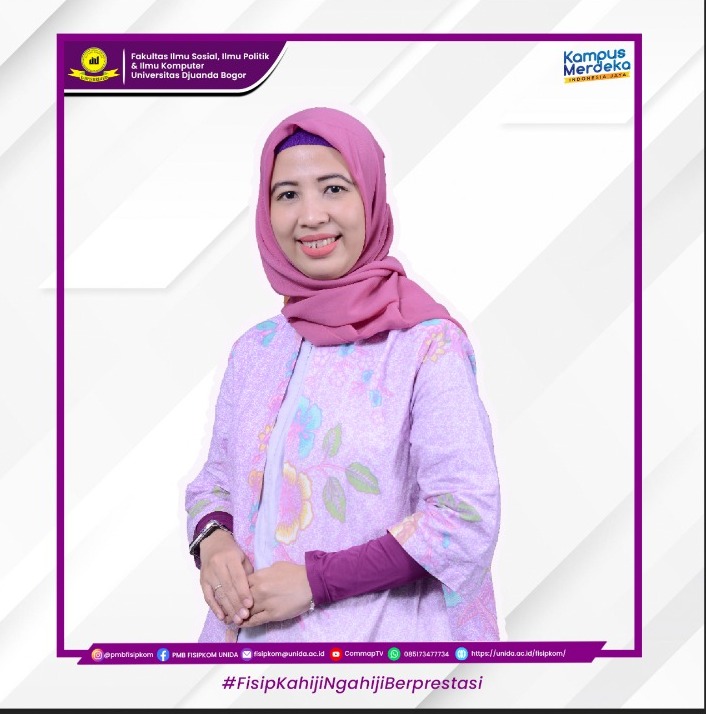Ardan Radio Convergence As An Adaptation Of Private Radio In The Digital Era
DOI:
https://doi.org/10.30997/jk.v10i2.13040Keywords:
Adaptation, Convergence, Digital era, Media institutions, Radio industryAbstract
The digital age poses great challenges to traditional media institutions, including the radio industry. This research aims to examine the application of convergence by private radio institutions, particularly Radio Ardan, to navigate this dynamic landscape. Adaptation is key in facing fierce competition in the digital media landscape for survival and achievement of media goals. Radio Ardan, considering the number of listeners, the ranking of private radio stations in Bandung City, and its business strategy, is the center of attention of this research. The internet accelerates cultural shifts in media consumption, facilitates access to audio-visual information, and encourages the growth of alternative mass media platforms, significantly changing the traditional radio landscape. The resulting convergence model can serve as a guide for other private radio stations in Bandung City, helping them adapt to the challenges of the digital era and meet changing consumer preferences. Convergence involves the integration of traditional radio broadcasting with digital platforms such as online streaming, podcasts, social media engagement and mobile apps. By utilizing these various channels, radio stations can expand their reach, engage with audiences in new ways, and stay relevant amidst growing media competition. Through research and analysis of Radio Ardan's convergence efforts, it is hoped that it can provide useful insights and recommendations for other private radio institutions. By understanding and implementing effective convergence strategies, radio stations can increase competitiveness, maintain listener engagement, and secure their position in the ever-evolving media landscape in Bandung City and its surroundings. Adaptation and innovation are the keys to success in the face of these changes, while collaboration with digital platforms opens up new opportunities for the radio industry to spread its wings and continue to survive in the digital era.
References
Albarran, A. B. (2010). The media economy. Routledge. https://doi.org/10.4324/9780203927717
Albarran, A. B., & Arrese, A. (2019). Time And Media Markets. Lawrence Erlbaum Associates. https://doi.org/10.1017/CBO9781107415324.004
Albarran, A. B., Chan-Olmsted, S. M., & Wirth, M. O. (2008). HANDBOOK OF MEDIA MANAGEMENT AND ECONOMICS. Lawrence Erlbaum Associates.
Apriliana, D. (2019). Deretan Kampanye Hitam yang Merujuk pada Jokowi di Pilpres 2019. IDN Times. https://www.idntimes.com/news/indonesia/dian-apriliana/deretan-kampanye-hitam-yang-merujuk-pada-jokowi-di-pilpres/3
Bonet, M., Ferna, D., & Ribes, X. (2011). The Changing Nature of Public Service Radio: A Case Study of iCat fm. Convergence: The International Journal of Research into New Media Technologies, 17(2), 177–192. https://doi.org/10.1177/1354856510394593
Cordeiro, P. (2012). Radio becoming r@dio: Convergence, interactivity and broadcasting trends in perspective. Participations, Journal of Audience and Reception Studies, 9(2), 492–510. http://www.participations.org/Volume 9/Issue 2/27 Cordeiro.pdf
Creswell, J. W., & Poth, C. N. (2018). Qualitative Inquiry & Research Design : Choosing Among Five Approaches (4th ed.). Sage Publications. https://doi.org/10.1017/CBO9781107415324.004
Dailey, L., Demo, L., & Spillman, M. (2005). The Convergence Continuum: A Model for Studying Collaboration Between Media Newsrooms. Atlantic Journal of Communication, 13(3), 150–168. https://doi.org/10.1207/s15456889ajc1303_2
Hidayat, D. R., Singarimbun, K., Karlinah, S., & Darwis, Y. (2019). Broadcasting Law 32/2002: A case of the Indonesian Government’s indecisiveness towards the implementation of radio network. Library Philosophy and Practice, 2019.
Jenkins, H. (2004). The Cultural Logic of Media Convergence. International Journal of Cultural Studies, 7(1), 33–43. https://doi.org/10.1177/1367877904040603
Jenkins, H. (2006). Convergence Culture: Where Old and New Media Collide. New York University Press.
Kotler, P., & Keller, K. L. (2016). Marketing Magement (15th ed.). Pearson.
McLuhan, M. (2013). Understanding media : the extensions of man. Gingko Press.
Singarimbun, K., Karlinah, S., Hidayat, D. R., & Darwis, Y. (2019). The role of celebrity radio DJs in contemporary radio industry: A case study of prambors network. Jurnal Komunikasi: Malaysian Journal of Communication, 35(3), 57–73. https://doi.org/10.17576/JKMJC-2019-3503-04
Tapsell, R. (2014). Platform convergence in Indonesia: Challenges and opportunities for media freedom. Convergence: The International Journal of Research into New Media Technologies, 1–16. https://doi.org/10.1177/1354856514531527
Trinoviana, A. (2017). Strategi Konvergensi Radio Sebagai Upaya Perluasan Pasar Audience dan Iklan (Studi Kasus Pada Swaragama Fm (101.7 Fm), Geronimo Fm (106.1 Fm), Dan Prambors Radio (102.2 FM/95.8 FM)). Jurnal Komunikasi, 12(1), 35–50. https://doi.org/10.20885/komunikasi.vol12.iss1.art3
Turow, J. (2017). Media Today Mass Communication in a Converging World. Routledge Tylor & Francis Group. https://doi.org/10.1017/CBO9781107415324.004
Weaver, B. (2007). Industry convergence - Driving forces, factors and consequences. Lund University.
Downloads
Published
How to Cite
Issue
Section
License
Copyright (c) 2024 JURNAL KOMUNIKATIO

This work is licensed under a Creative Commons Attribution-ShareAlike 4.0 International License.
Authors who publish with Jurnal Komunikatio agree to the following terms:
- Authors retain copyright and grant the journal right of first publication with the work simultaneously licensed under a Creative Commons Attribution 4.0 International License that allows others to share the work with an acknowledgement of the work's authorship and initial publication in Jurnal Komunikatio.
- Authors are able to enter into separate, additional contractual arrangements for the non-exclusive distribution of the journal's published version of the work (e.g., post it to an institutional repository or publish it in a book), with an acknowledgement of its initial publication in Jurnal Komunikatio.
- Authors are permitted and encouraged to post their work online (e.g., in institutional repositories or on their website) prior to and during the submission process, as it can lead to productive exchanges, as well as earlier and greater citation of published work











